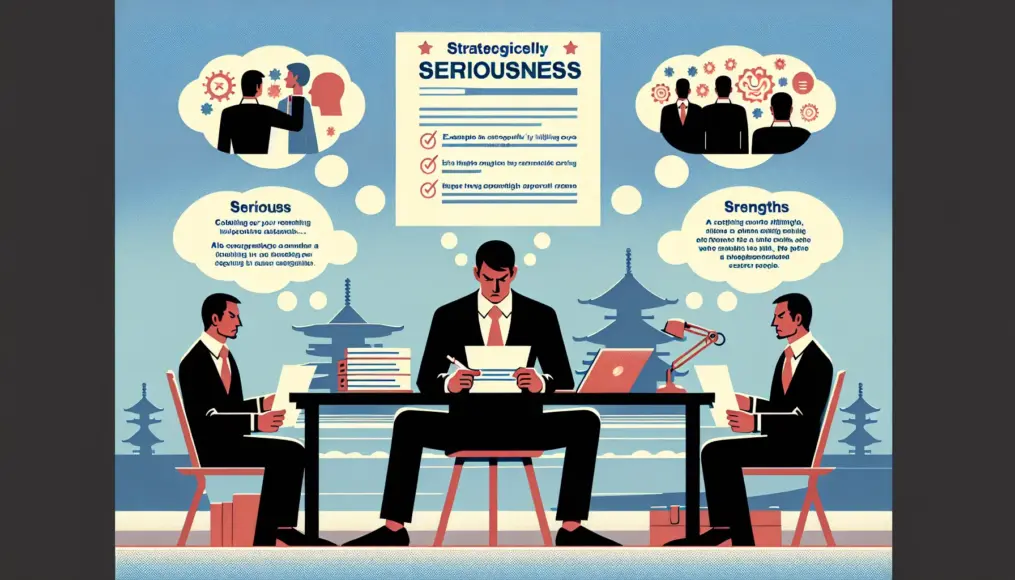When it comes to landing a job, the content of your resume is absolutely crucial. Your resume is more than just a document; it’s your first impression, and that makes it a key player in the hiring process. By effectively showcasing your strengths and aligning your qualifications with what employers are looking for, you can gain a competitive edge in the selection process.
In this article, we’ll cover everything from the basic structure of a resume to the specifics that companies prioritize, along with successful examples and common pitfalls to avoid. By the time you finish reading, you’ll have a clear understanding of how to craft a standout resume, making your job search smoother and more effective.
Remember, your resume is not just a formality—it’s a vital tool for expressing who you are. With well-thought-out content, you’ll be on the path to success in your job hunt.
- An overview of the essential structure and key points of a resume
- What employers really want to see in your resume
- Practical tips for creating your resume based on successful examples
Essential Structure and Key Points for Your Resume
When it comes to job hunting, your resume is a crucial document that shapes your first impression. By including the right information, you can make a positive impact on hiring managers. In this section, we’ll delve into the essential details you need to include in your resume, as well as tips on how to effectively showcase your work experience and education.
Understanding the basic structure of a resume and how to organize your information is key to your success. With careful preparation and a well-crafted resume, you can streamline your job search process.
How to Write Basic Information
The first part of your resume should clearly present your basic information. This includes your name, address, and contact details, as well as the date and a photograph. The photo is particularly important since it can significantly influence first impressions; choose one that conveys a clean and professional image.
Additionally, ensure that your contact information is accurate to avoid any mistakes. Having your basic information in order helps establish trust with potential employers.
- Basic information on your resume should include your name, address, and contact details.
- Choose a clean and professional photo.
- Double-check your contact information to avoid errors.
How to Showcase Your Work Experience and Education
The sections on work experience and education in your resume are vital for highlighting your skills and background. For your work experience, detail your past job responsibilities and roles, making sure to illustrate how you contributed to your previous employers. Including quantifiable achievements can make your experience more compelling.
For your education, list your alma mater and major, and feel free to mention any relevant certifications or activities. This can effectively communicate your expertise and enthusiasm for your field.
- Clearly articulate your work experience with specific details and numerical achievements.
- Include your school and major in the education section.
- Mention certifications and activities to emphasize your expertise.
What Companies Look for in a Resume
Understanding what companies expect from your resume is crucial during your job search. A resume is an essential tool for showcasing your skills and experiences. While different companies prioritize various factors, grasping the generally sought-after elements can give you an edge in the selection process. In this section, we’ll discuss the key components companies focus on and strategies to help you stand out from other applicants.
By enhancing your resume, you can effectively communicate your strengths to potential employers. With accurate information and a compelling presentation, you can create a resume that captures the attention of hiring managers.
Key Points Companies Value
When reviewing resumes, companies primarily focus on skills, experience, and self-promotion content. It’s particularly important to highlight experiences and qualifications relevant to the industry and position you’re applying for. Demonstrating specific achievements and results can significantly boost your credibility. Companies want to know what kinds of tasks you have undertaken and how you’ve accomplished your goals.
Moreover, in the self-promotion section, it’s essential to articulate your strengths clearly. To differentiate yourself from other applicants, incorporating unique perspectives or experiences is crucial. By showcasing that you are an attractive candidate, you increase your chances of progressing through the selection process.
- Skills, experience, and self-promotion are key focus areas
- Highlight experiences relevant to the target company
- Specific achievements enhance your persuasiveness
Differentiation Strategies for Success
To stand out from other applicants, it’s important to emphasize your uniqueness in your resume. For instance, you can create a memorable resume by showcasing projects you’ve been particularly passionate about, unique qualifications, or skills gained through hobbies. Additionally, being creative with the design and layout of your resume can make it more visually appealing.
Furthermore, conducting research on the company and incorporating elements that align with its culture and values can be effective. Tailoring your approach to match the desired candidate profile can work in your favor during the selection process. Employing differentiation strategies will allow you to highlight your personal appeal to the fullest.
To truly distinguish yourself from other applicants, it’s vital to effectively showcase your resume’s content. If you found this article interesting, you might also want to check out our piece on “Shining on Your Resume! A Guide to Leveraging Your Experience.” Learning specific techniques will help you craft a resume that resonates with hiring managers.
- Emphasizing uniqueness is key
- Highlight projects and qualifications
- Aligning content with company culture can give you an advantage
Examples of Resume Creation and Success Stories
When crafting a resume, it’s crucial to draw inspiration from concrete examples and success stories. By analyzing the resumes of successful individuals, you can gain insights into what aspects are valued by employers. Additionally, learning effective expressions and structures can help you make your own resume more appealing. In this section, we’ll delve into specific content examples and examine the resumes of successful candidates.
A key point in creating a winning resume is differentiating yourself from other applicants. Let’s explore together what types of content catch the eye of employers through practical examples.
Effective Content Examples
The information included in your resume needs to be specific and relevant. For instance, when detailing your work experience, it’s important not just to list job responsibilities but to highlight the achievements you’ve made, incorporating concrete numbers or successful projects. This clarity will strengthen your personal brand.
In the self-promotion section, sharing specific anecdotes about your strengths and skills can make your narrative even more compelling. For example, illustrating your leadership experiences or instances where you overcame challenges can leave a lasting impression.
- Showcase specific achievements with numbers in your work history
- Use anecdotes in your self-promotion to convey your strengths
- Highlight relevant experiences that relate to the company
Success Stories of Resumes
Referencing the resumes of successful individuals can teach you effective strategies. For example, one successful candidate noted in their work history, “As a team leader, I drove the project forward and reduced the deadline by 30%.” By using concrete figures like this, they made a strong impression on potential employers.
In their self-promotion, they stated, “My strength lies in problem-solving. I provided specific examples of how I approached challenges I faced in the past and the results I achieved.” It’s vital to convey how your experiences can provide value to a company.
- Use examples that demonstrate achievements with concrete numbers
- Express problem-solving skills and leadership in specific terms
- Communicate the value you can bring to a company based on your experiences
Key Considerations and Common Mistakes When Creating a Resume
When crafting your resume, there are several important points to keep in mind. By understanding commonly overlooked details and expressions, you can enhance the quality of your application materials. Providing accurate information is crucial for success in your job search. In this section, we’ll delve into content and expressions to avoid, as well as frequently missed points that could make a difference.
Your resume serves as a platform for self-expression and plays a pivotal role in forming a first impression with potential employers. By including solid content and adhering to key considerations, you can position yourself more favorably in the selection process.
Content and Expressions to Avoid
It’s essential to be cautious about what you include in your resume. First and foremost, steer clear of negative expressions or ambiguous statements. For instance, saying “I haven’t decided what I want to do yet” can raise concerns for employers. Instead, focus on conveying specific goals and enthusiasm for the position.
Additionally, avoid including any false information. Providing inaccurate details about your background or qualifications can lead to issues during the selection process. Honesty is fundamental to building trust with potential employers.
- Avoid negative expressions
- Show specific goals and enthusiasm
- Do not include false information
Commonly Overlooked Points
There are also several frequently overlooked aspects when creating a resume. First, make sure all your basic information is accurate and complete. Pay particular attention to your contact details to avoid any mistakes that could hinder communication. Don’t forget to include the date and your signature as well.
Moreover, it’s important to be mindful of your resume’s format and layout. Using a readable font and ensuring appropriate margins can leave a positive impression on hiring managers. A well-organized resume not only enhances readability but also boosts the perceived reliability of your content.
- Be careful with omissions or errors in basic information
- Remember to include the date and signature
- Aim for a readable format and layout
Conclusion
When it comes to job hunting, your resume is a crucial document that shapes the first impression you make. It’s essential to accurately present your basic information, effectively showcase your work experience and education, and understand what employers are looking for. By preparing thoroughly and referring to successful examples, while also being mindful of what to avoid, you can craft an appealing resume that stands out.
A well-structured resume allows you to clearly communicate your strengths, giving you an edge in the selection process. Keep these key points in mind as you tailor your resume to fit your unique profile, and set yourself up for success in your job search.
- Your resume is a key document that shapes your first impression
- It’s important to accurately present your basic information, work experience, and education
- Refer to successful examples and pay attention to what to avoid
Create a resume that highlights your strengths and sets you on the path to a successful job search. We’d love to hear your thoughts and feedback on this article, so feel free to share your comments!



Comment